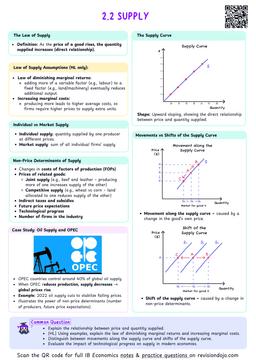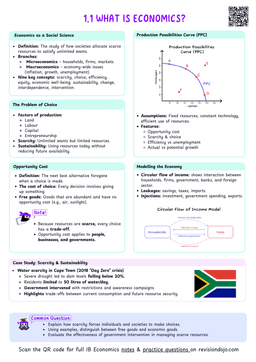Circular flow of income model
Circular flow of income
An income flow in an economy where the value of the output produced is equivalent the total income earned from its production, which is also equivalent to the expenditures spent on purchasing that output.
At its core, an economy consists of firms and households, which are connected through the economy:
- Firms generate goods and services, collectively forming the national output.
- The national output is the value of all the goods and services generated in an economy.
- Households provide the factors of production (labor, land, capital, and entrepreneurship) that firms need to produce this output.
- The payments households receive by firms for these resources constitute the national income.
- Households spend the money received from the national income to purchase the goods and services produced by firms.
- The total value of this spending represents the national expenditure.
In other words, the circular flow of income indicates that:
National output = National income = National expenditure.
This flow of income can also be represented by the circular flow of income model.
Circular flow of income model
A model illustrating the flow of resources from households to firms, the movement of goods and services from firms to households, and the associated monetary flows, including household income generated from selling resources and firms' revenues from selling their products.

The circular flow of income illustrates how:
- The factors of production flow from households to firms (upper dashed blue arrow).
- Firms pay national income to households in return for these resources (solid pink arrow).
- Households use this income to purchase goods and services from firms as national expenditure (solid blue arrow).
- Firms supply goods and services to households, forming the national output (dashed pink arrow).
From this, it can be seen how:
- The national output (value of the total goods and services produced by firms in an economy)...
- Equals the national income (total income received by the households in producing the economy's output)...
- Which equals the national expenditure (total spending of households in purchasing the total output of the economy).
The ideas from this section will be central to the macroeconomics section of the syllabus, so make sure to understand them now!
Interdependence between economic decision-makers interacting and making choices in an economy
The circular flow of income highlights the relationships and interactions between households and firms in an economy.


